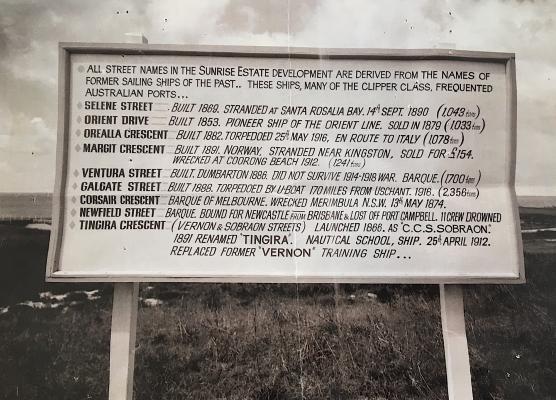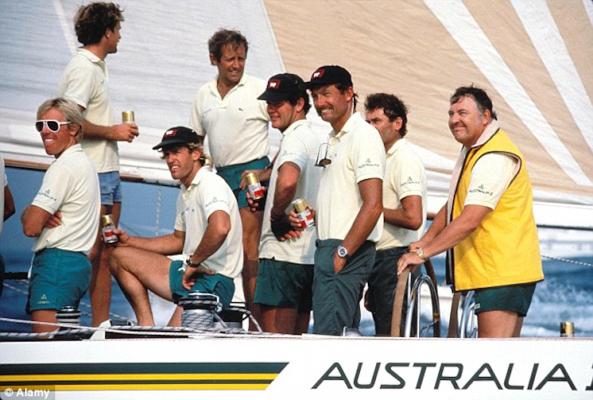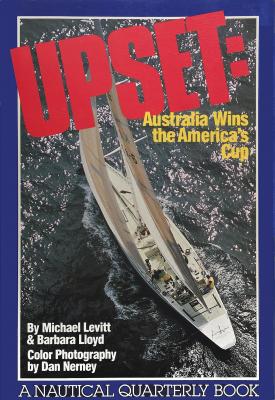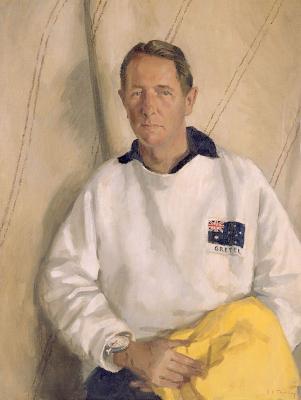If you’ve ever wondered about the nautical theme of so many of the street names of Sunrise Beach, you can put it down to the quirky nature of former Noosa councillor Peter Sharpe, who was also the Queensland manager of T.M. Burke for some years, and the chief driver of that company’s later residential developments.
As he reveals in his book, Up Rose An Emu, Sharpe first gave Sunrise Estate its name some 40 years after the adjoining Sunshine Beach Estate was opened, meaning it to signify the dawn of a new era for the developer, which it was, albeit for a pretty short time. While he was casting around for street names, Sharpe was approached by the secretary of the Tingira Old Boys Association, a group of former trainees from the ship of that name which, long before them, had plied our coastline in the late 1800s. They now sought to have its name attached to a street. Well, Peter Sharpe could do better than that.
He delved into the nautical history books and came up with dozens of ship names, concentrating on the romantic sailing clippers, and including the Orient (Orient Drive), the pioneer ship of the Orient Line, and the Orealla (Orealla Crescent), torpedoed in World War I. Then he erected signs around the new estate, explaining the names and the history. These signs have long since disappeared, but I am indebted to reader Garry Hordern for sending me a photo of the sign that once lived on Margit Crescent, and putting me on the path of this story.
As Sunrise Beach expanded in the 1980s, it got caught up in the national euphoria surrounding Australia’s first claiming of the legendary America’s Cup in 1983, when the John Bertrand-skippered Australia II heroically came from 3-1 behind to win the series off Newport, Rhode Island, inspiring Prime Minister Bob Hawke to declare, “Any boss who sacks anyone for not turning up today is a bum”, and US President Reagan to say, “You have shown us the stuff of which Australians are made.”
In this spirit, our street namers went in hard and gave just about everyone associated with the famous victory, winners, losers, also-rans, gazillionaire syndicate bosses, a street to call their own, even delving into our somewhat inglorious previous historic record at the Cup and beyond. Thus we have from 1983:
Bond Court, celebrating the now-disgraced late tycoon who led the syndicate (and the celebration); Bertrand Road, for the enigmatic skipper of Australia II; Ben Lexcen Drive, for the eccentric genius who designed the yacht and the winged keel; Newport Street, for the host club; Liberty Place, for the losing defender; and Conner Place, for the losing skipper. Jeez, we’re good sports!
Celebrating our previous losing challengers, we have: Gretel Court (1962); Dame Pattie Drive (1967) and Southern Cross Parade (1974); plus Hardy Street, for the great sailor and winemaker Jim Hardy, who skippered in 1970, 1974 and 1980. Then, somewhat randomly, we go way back in time to celebrate Scottish tea mogul Sir Thomas Lipton (Lipton Street) who lost a few times in the early 1900s, earning him the moniker of “the loveable loser”, and Resolute Street in honour of an American boat that won the Cup in 1920. What we don’t have in Sunrise Beach is a street named for Jock Sturrock, one of our greatest skippers who led us in the Admiral’s Cup and at four Olympics, including a bronze medal in Melbourne in 1956, but lost in two challenges for the America’s Cup on Gretel in 1962 and on Dame Pattie in 1967. Jock was a lovely bloke who ended his days in Noosaville, where a bridge within the Noosa Waters precinct is meant to be named in his honour, except I can’t find a sign or a plaque anywhere.
Maybe something should be done about that. In the meantime, here’s his portrait from the National Portrait Gallery.










